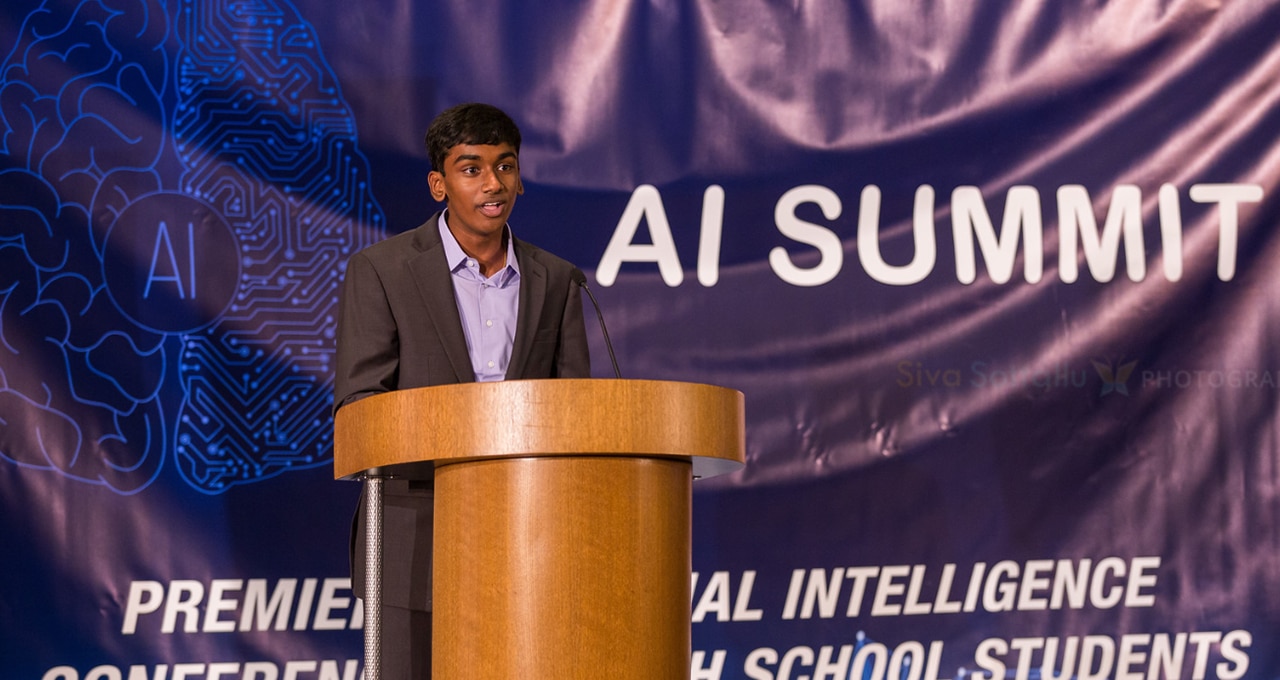Some teens might feel the pressure of having an older sibling as accomplished as 19-year-old Kavya Kopparapu, a Harvard sophomore named last year a U.S. Presidential Scholar and one of TIME’s 25 Most Influential Teens.
But high school senior Neeyanth Kopparapu, 17, is holding his own. He’s making his own mark with PDGAN, a deep learning model to help medical professionals diagnose Parkinson’s disease from MRI scans.
It’s not even his first AI project — Kopparapu presented a poster at last year’s GPU Technology Conference on a natural language processing model that detects depression from tweets.
Together, the D.C.-area siblings have collaborated on a deep learning tool to diagnose diabetes-induced blindness in regions with limited healthcare access. They also founded in 2015 GirlsComputingLeague, a nonprofit working to improve diversity in computer science.
A GAN on a Mission
Parkinson’s disease — a neurodegenerative disorder causing tremors, stiffness and problems moving and balancing — affects more than 10 million people worldwide. When Kopparapu’s grandfather was diagnosed with it two years ago, his family was dismayed to find that it was too late to avail of many existing treatments for the symptoms.
“Like most Parkinson’s patients, he was diagnosed at a stage where a lot of the treatments out there become ineffective,” he said. “Originally, we thought it was a fluke that he was diagnosed later. But upon further research into treatments, we realized it’s not a fluke, it’s a problem with the system.”
It was a problem Kopparapu thought AI could help solve. Using an annotated dataset of around 1,000 brain MRI scans from the University of Southern California, he began training a neural network to spot signs of Parkinson’s. Due to the limited size of the dataset, the trained model’s accuracy hovered at around 90 percent.
That’s already a significant improvement over the current clinical accuracy of diagnosing Parkinson’s from brain scans. But Kopparapu wasn’t settling for an A-minus.
“The only way that I was going to be able to improve the model’s performance was by increasing the number of data points that I had,” he said. “I heard about GANs at the time and thought — what if I was able to use this tool to synthetically augment the dataset?”
Using generative adversarial networks, or GANs, helped Kopparapu boost the AI model’s accuracy to 96.5 percent, with an accuracy of around 98 percent on scans from later-stage patients. The deep learning networks were trained using an NVIDIA Tesla GPU on the Amazon Web Services cloud platform.
Parkinson’s is typically diagnosed when a patient starts showing physical symptoms, with scans taken as just one part of the diagnostic process. Kopparapu hopes that, once clinically validated, tools like PDGAN could be used to help confirm patient diagnoses earlier, giving them more options for treatments.
Learning Computer Science By Heart
Like many software engineers, Kopparapu can trace his passion for computer science back to an early love of video games. He once hoped to create his own version of the popular Pokémon series.
But gaming, he says, is “something I don’t have time for anymore.”
Instead, Kopparapu is focused on his passion for computer science and math. He started learning to code in middle school using online resources, and later took an AI class as a freshman at Thomas Jefferson High School for Science and Technology.
Kopparapu is most interested about the math that underlies AI (having taken multivariable calculus and linear algebra as a sophomore) and is considering a college major in applied math or computer science.
While he’s so far worked with NVIDIA GPUs in the cloud and in a server at his high school, Kopparapu set eyes on his dream AI system when he watched NVIDIA founder and CEO Jensen Huang unveil it live at GTC.
“If there was a DGX-2 system I could tap into,” he said, “that’d be the coolest thing in the world.”
Like Sister, Like Brother
Kopparapu owes his interest in AI-driven healthcare applications to having his older sister as a research and entrepreneurial partner.
“She was interested in biology and healthcare first, and picked up computer science when we started working together,” he said. “With me it was the other way around — I picked up healthcare from her.”
The siblings’ first AI tool, a smartphone app dubbed Eyeagnosis, has been tested as a screening tool for diabetic retinopathy by the Aditya Jyot Eye Hospital in Mumbai, India. And the nonprofit they started has grown to around two dozen student volunteers organizing events and workshops for fellow high schoolers who come from underrepresented communities.
Although the pair have a number of successful ventures under their belts already, school comes first.
“A lot of people have suggested we do a sibling-founded startup,” Kopparapu said, “but I really want to at least finish my undergrad before I look at that possibility.”
